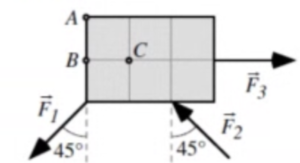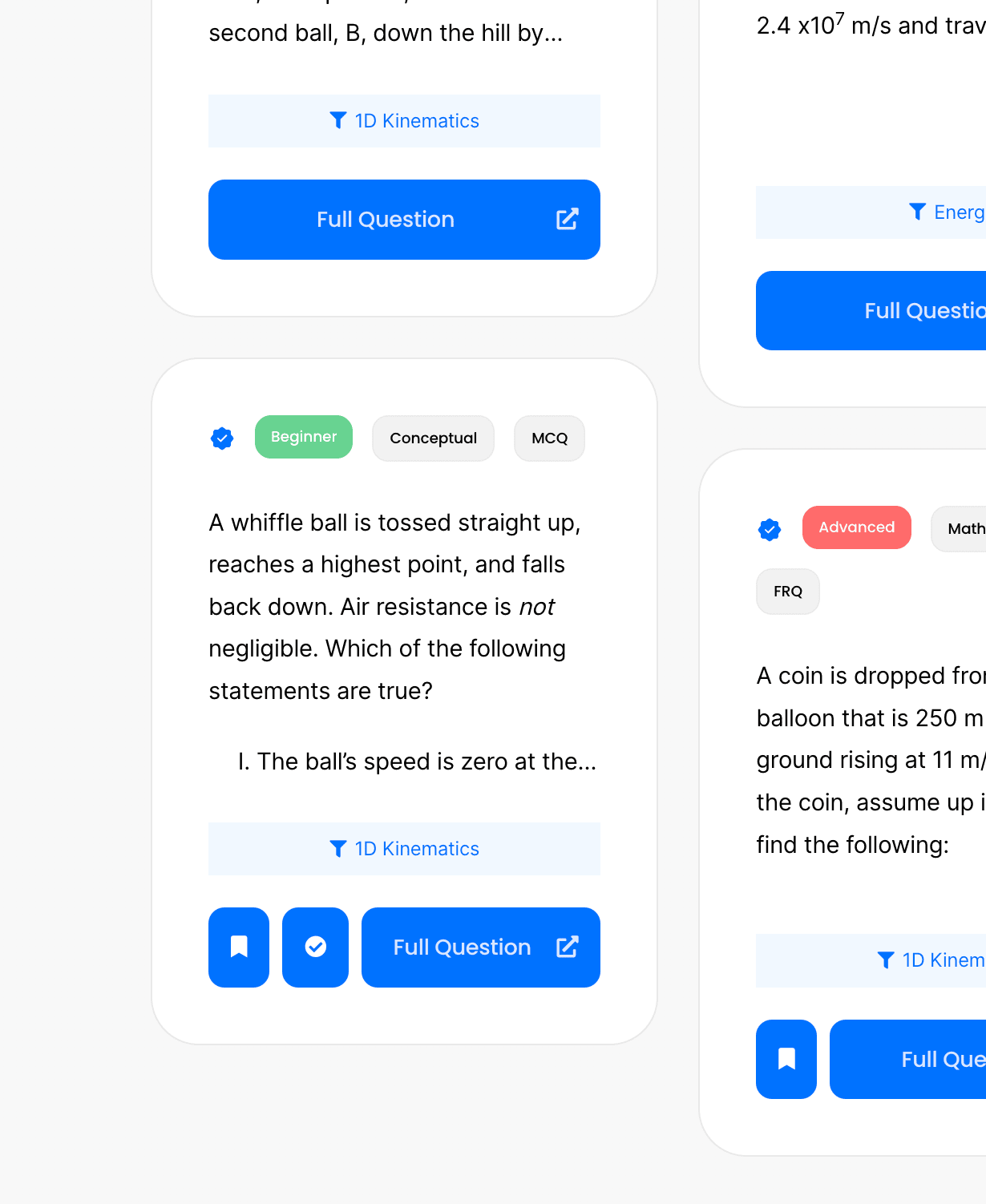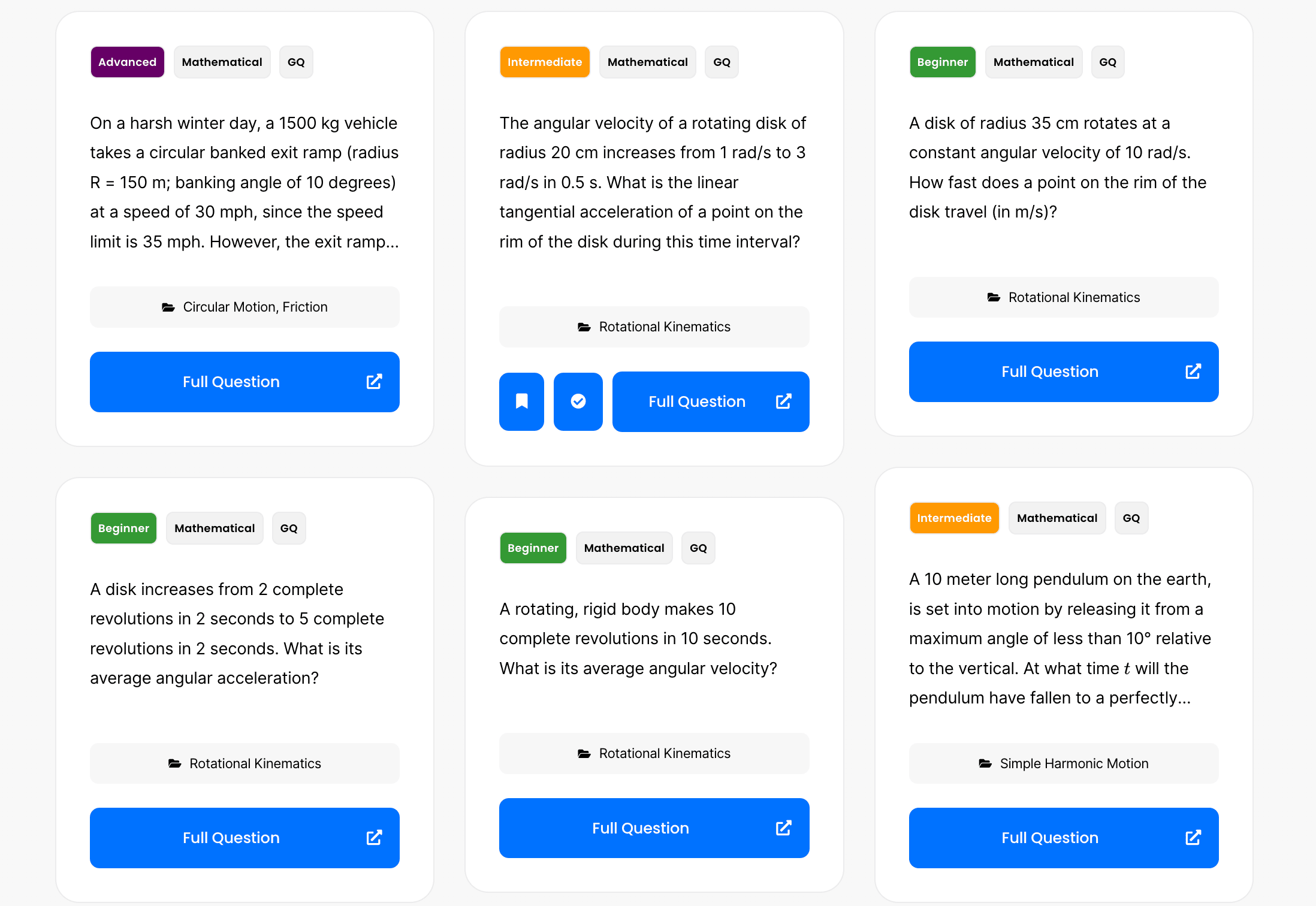Police officers have measured the length of a car’s tire skid marks to be \( 23 \, \text{m} \). This particular car is known to decelerate at a constant \( 7.5 \, \text{m/s}^2 \). What was the car’s initial velocity?
A loop-de-loop roller coaster has a radius of \( 30 \) \( \text{m} \). Determine the apparent weight a \( 500 \) \( \text{N} \) person will feel at the bottom of the loop while traveling at a speed of \( 25 \) \( \text{m/s} \) and at the top of the loop while traveling at a speed of \( 20 \) \( \text{m/s} \).
A merry-go-round spins freely when Diego moves quickly to the center along a radius of the merry-go-round. As he does this, it is true to say that

The graph in the figure shows the position of a particle as it travels along the x-axis. At what value of \(t\) is the speed of the particle equal to \(0 \, \text{m/s}\)?
note that the slope of position vs time is velocity. And the graph most closely reemsbles a flat or 0 slope at 3 seconds
A 6.0-cm-diameter gear rotates with angular velocity \( \omega = \left(20-\frac {1}{2} t^2 \right) \, \text {rad/s} \), where \(t\) is in seconds. At \(t = 4.0 \, \text{s}\), what are
A solid sphere of mass [katex] 1.5 \, \text{kg} [/katex] and radius [katex] 15 \, \text{cm} [/katex] rolls without slipping down a [katex] 35^\circ[/katex] incline that is [katex] 7 \, \text{m} [/katex] long. Assume it started from rest. The moment of inertia of a sphere is [katex] I= \frac{2}{5}MR^2 [/katex].

Three forces of equal magnitude are applied to a \( 3 \)-m by \( 2 \)-m rectangle. Force \( F_1 \) and \( F_2 \) act at \( 45^\circ \) angles to the vertical as shown, while \( F_3 \) acts horizontally.
How large must a heating duct be if air moving \( 3 \ \frac{\text{m}}{\text{s}} \) along it can replenish the air in a room of \( 300 \ \text{m}^3 \) volume every \( 15 \) minutes? Assume the air’s density remains constant.
Does the odometer of a car measure a scalar or a vector quantity? What about the speedometer?
An object with a mass m = 80 g is attached to a spring with a force constant k = 25 N/m. The spring is stretched 52.0 cm and released from rest. If it is oscillating on a horizontal frictionless surface, determine the velocity of the mass when it is halfway to the equilibrium position.
Two uniform solid balls, one of radius \( R \) and mass \( M \), the other of radius \( 2R \) and mass \( 8M \), roll down a high incline. They start together from rest at the top of the incline. Which one will reach the bottom of the incline first?
In the lab, a student is given a glass beaker filled with water with an ice cube of mass \( m \) and volume \( V_c \) floating in it.
The downward force of gravity on the ice cube has magnitude \( F_g \). The student pushes down on the ice cube with a force of magnitude \( F_P \) so that the cube is totally submerged. The water then exerts an upward buoyant force on the ice cube of magnitude \( F_B \). Which of the following is an expression for the magnitude of the acceleration of the ice cube when it is released?
By continuing you (1) agree to our Terms of Use and Terms of Sale and (2) consent to sharing your IP and browser information used by this site’s security protocols as outlined in our Privacy Policy.
Quick Start Guide
AP physics 1, AP C, honors and advanced physics students.
Quickly filter questions by units and more.


Here’s guide to using 5 UBQ filters.
GQ = general question, MCQ = multiple choice, FRQ = free response.


Click the check or bookmark button.
Now you’ll be able to see completed or bookmarked questions at a glance!
Answer keys, personalized for you.

Phy will be responsible for grading your FRQs and GQs.
No more copy and pasting. Just solve and snap.
Questions for Mastery

By continuing you agree to nerd-notes.com Terms of Service, Privacy Policy, and our usage of user data.